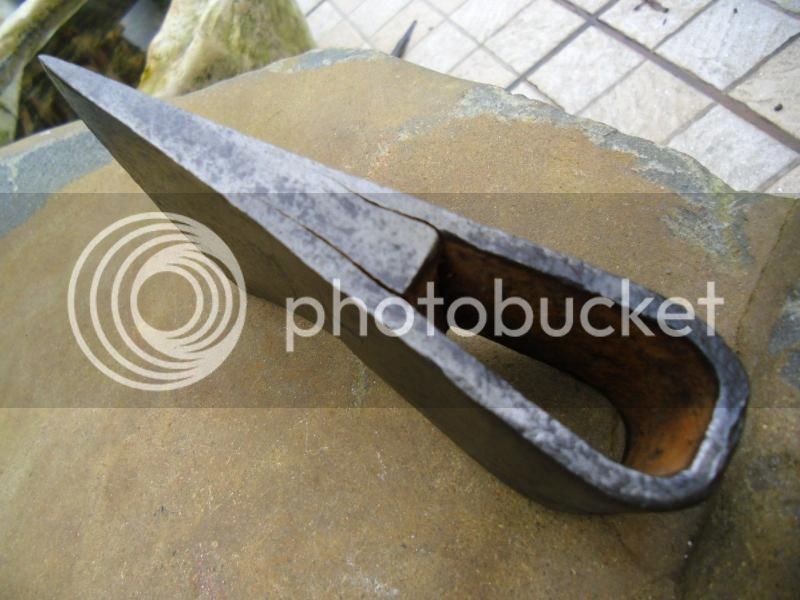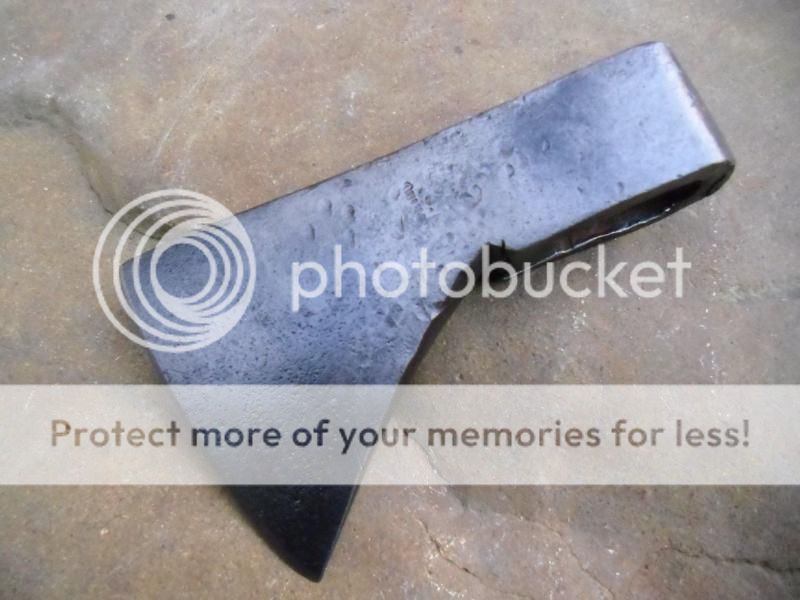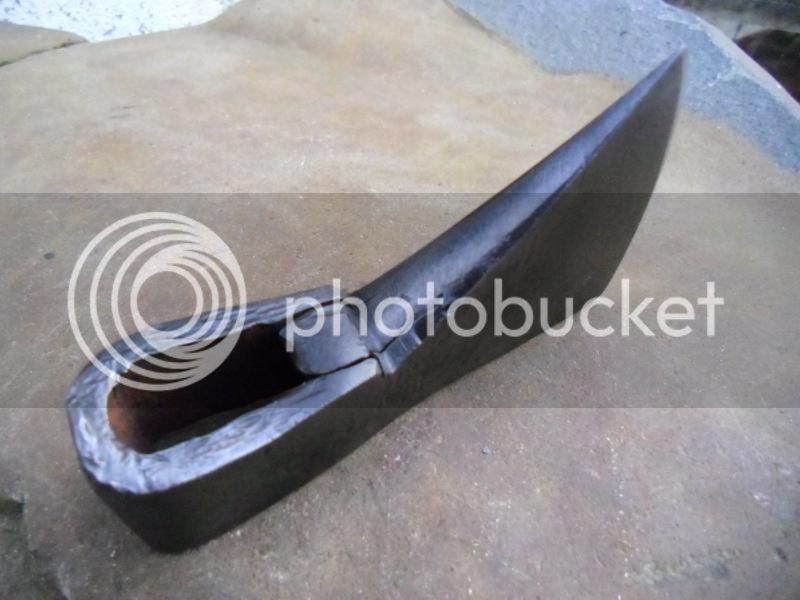Here's my awesome little bitty belt axe head, that I think is the most awesomest thing ever. Marked faintly "BEDFORD MFG/BEDFORD QUE". If unmarked, many would swear it had to be an early 19th century or earlier axe, yet the mark puts a date of 1895-1933 on it. Hand forged, not perfectly shaped, filed out mostly smooth, but with pits remaining (old hand forged axes were not generally left rough and black, at least not what I have seen. It is popular today, though, just to prove that it is a hand forged axe.) Here maybe you can see the end of the welded in steel bit in the characteristic Biscayne notch. Weld lines can be seen on the sides of the bit, though they are very faint. I guess you might consider this a "Hudson's Bay Pattern" axe, with the slightly thickened poll, and the thinner cheeks. True "Biscayne" axe heads can be quite thick and wedge shaped.
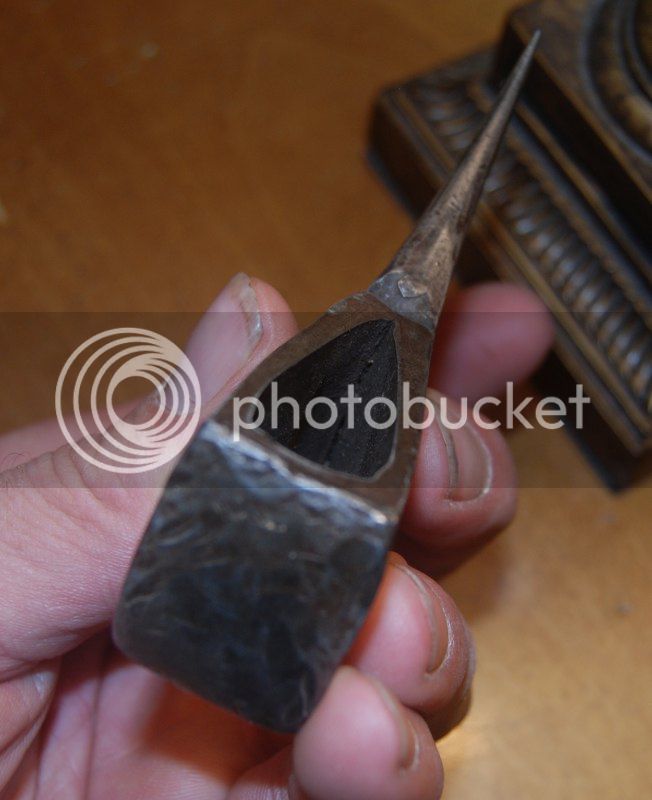
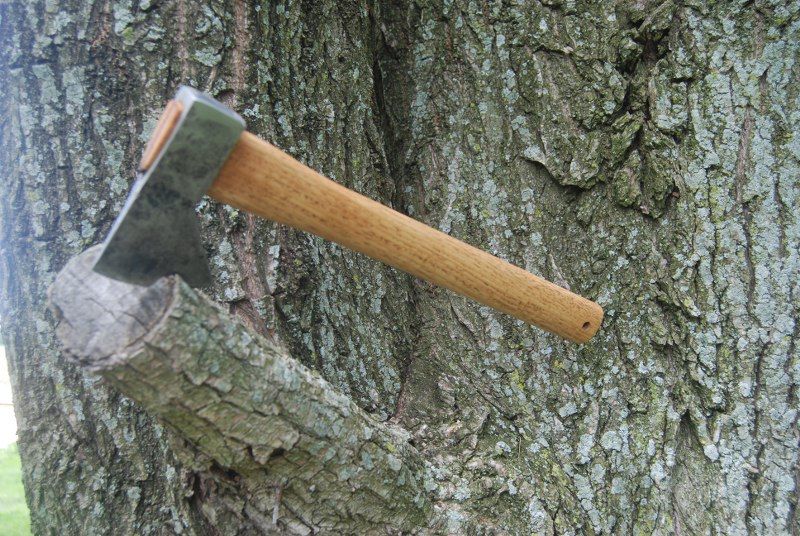
I just also bought two very similar Biscayne type axe heads from Portugal. Both fairly small, one a bit smaller than the other, nice "belt axe" size. I will have to guess that these were made in the 1930's-1940's. Yep, forged. On these two, however, you can see that the method of bit insertion is rather more "production" quality. The steel runs back all the way to the eye, and they didn't bother welding it fully all the way back.
This one is the slightly larger one, with the rather modern-ish looking marking. I'll assume the "1" means "1 kilogram"
This other one has more pleasing proportions, narrower, which makes it look longer, and more like older Biscayne axe heads. It is in rougher shape, however, and I need to clean it up and reshape the mashed-in eye. I'll also probably clean out and silver braze up the cracks where the bit wasn't welded together on both of them. This one has a small mark (an illegible name) and will make a dandy little reasonable facsimile of a 17th-18th century axe. :wink:
Just because something is "hand forged" don't mean it's that old. Go to the ebay site of any European country and search for that language equivalent of "old axe" or "antique axe", and you will find a large number of really fantastic hand forged axes of all kinds made well into the 20th century. Many European carpenter's axes are being imported today and sold as "tomahawks" to unwary (and many who should be wary, but aren't) collectors.
I sometimes go to
www.ebay.de and type in "alte axt" and then go, "oooh! I want that, and that, and that, and that...!" :haha:








